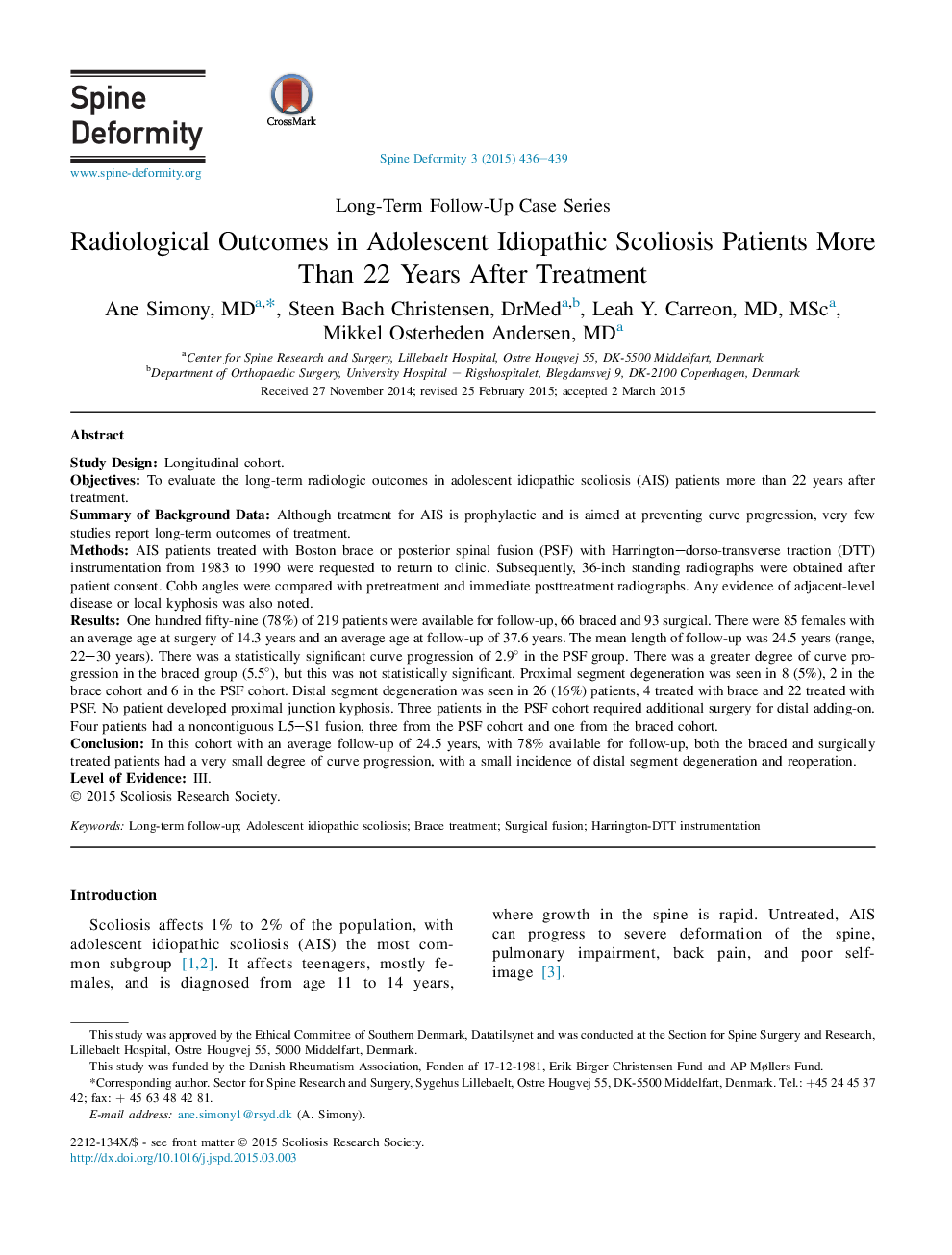| کد مقاله | کد نشریه | سال انتشار | مقاله انگلیسی | نسخه تمام متن |
|---|---|---|---|---|
| 4095541 | 1268539 | 2015 | 4 صفحه PDF | دانلود رایگان |
Study DesignLongitudinal cohort.ObjectivesTo evaluate the long-term radiologic outcomes in adolescent idiopathic scoliosis (AIS) patients more than 22 years after treatment.Summary of Background DataAlthough treatment for AIS is prophylactic and is aimed at preventing curve progression, very few studies report long-term outcomes of treatment.MethodsAIS patients treated with Boston brace or posterior spinal fusion (PSF) with Harrington–dorso-transverse traction (DTT) instrumentation from 1983 to 1990 were requested to return to clinic. Subsequently, 36-inch standing radiographs were obtained after patient consent. Cobb angles were compared with pretreatment and immediate posttreatment radiographs. Any evidence of adjacent-level disease or local kyphosis was also noted.ResultsOne hundred fifty-nine (78%) of 219 patients were available for follow-up, 66 braced and 93 surgical. There were 85 females with an average age at surgery of 14.3 years and an average age at follow-up of 37.6 years. The mean length of follow-up was 24.5 years (range, 22–30 years). There was a statistically significant curve progression of 2.9° in the PSF group. There was a greater degree of curve progression in the braced group (5.5°), but this was not statistically significant. Proximal segment degeneration was seen in 8 (5%), 2 in the brace cohort and 6 in the PSF cohort. Distal segment degeneration was seen in 26 (16%) patients, 4 treated with brace and 22 treated with PSF. No patient developed proximal junction kyphosis. Three patients in the PSF cohort required additional surgery for distal adding-on. Four patients had a noncontiguous L5–S1 fusion, three from the PSF cohort and one from the braced cohort.ConclusionIn this cohort with an average follow-up of 24.5 years, with 78% available for follow-up, both the braced and surgically treated patients had a very small degree of curve progression, with a small incidence of distal segment degeneration and reoperation.Level of EvidenceIII.
Journal: Spine Deformity - Volume 3, Issue 5, September 2015, Pages 436–439
